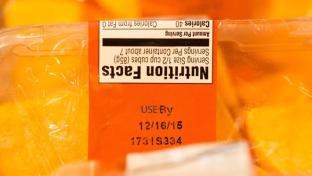Most Food Products Now Sport Simpler Date Labels: GMA
According the Grocery Manufacturers Association (GMA), since the 2017 launch of its date labeling initiative, which narrowed the array of product labels to two choices, “BEST If Used By” and “USE By,” 87 percent of products now carry the streamlined labels. The information appeared in the trade group’s new report, “Best if Clearly Labeled.”
What's more, GMA projects 98 percent adoption of the labels by the end of 2019, with complete adoption expected by January 2020, in conjunction with the new FDA Nutrition Facts panel.
“Our industry is committed to empowering consumers to make informed decisions about the products they bring into their homes,” noted Geoff Freeman, president and CEO of Washington, D.C.-based GMA. “This is a proactive industry that put forward a proactive solution to give American families the confidence and trust they deserve in the goods they buy.”
After encountering plenty of consumer confusion about the number of date labels, GMA teamed up with the Food Marketing Institute to unite 25 manufacturers and grocery retailers to create the two options.
GMA found in a survey that while some consumers go by smell (24 percent) or the appearance of food (30 percent) to determine whether an item was safe to eat, the most common way that they determine whether to throw food away is according to on the label dates (44 percent).
The “BEST If Used By” and “USE By” designations were clear to nearly nine in 10 (88 percent) survey respondents, while another 85 percent said moving to only those two labels would be helpful to them. The chief benefits survey respondents identified from the two date labels were 1) feeling safer about the foods they eat, 2) believing that they would throw less away, 3) saving money by discarding less, and 4) having more confidence in the products that they use.
“Date labeling is a step toward meaningful food waste reduction that makes it easier for Americans to shop smarter and throw away less,” added Freeman.
Product data in the report comes from a December 2018 survey of 43 consumer packaged goods companies representing 39,308 SKUs, with all other data taken from GMA’s online survey conducted Dec. 7-9 1,002 American adults via Google Consumer Surveys.
With widespread adoption of the two labels, GMA is turning to social media to set a 2019 goal for every U.S. household to throw out 10 items fewer than they did the year before, for a goal of 638 million pounds less food waste. Consumers can join the conversation using the hashtag #10ItemsLess.






